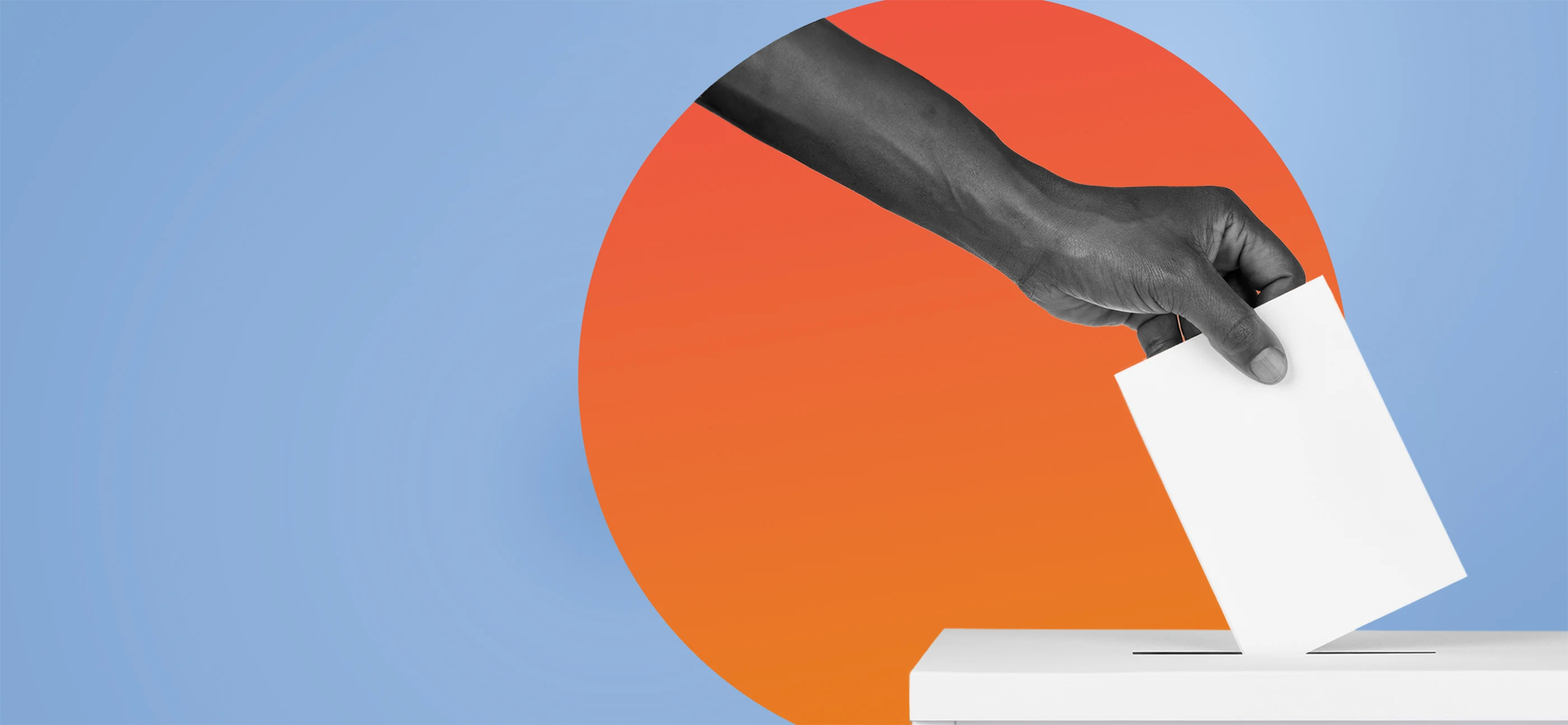.jpg)
As another election season approaches, American politics feels more polarized than ever, with racial tensions flaring in an uncertain economy. And a recent study parsing newly available data shows how a landmark Civil Rights-era law may have inadvertently fanned those flames.
Almost 60 years after the Voting Rights Act, we see that areas where the effects of the law were stronger displayed more negative racial attitudes.
The 1965 passage of the Voting Rights Act, a federal law that cracked down on discriminatory voting practices across the southern United States, sparked widespread political participation and bolstered economic conditions for Black communities. But the law also galvanized "racially conservative" white voters, stoking their fear of losing power and influence, a dynamic that lingers today, write researchers in a recent working paper.
“Almost 60 years after the Voting Rights Act, we see that areas where the effects of the law were stronger displayed more negative racial attitudes, which took the form of violent behavior—namely white individuals committing more racially motivated hate crimes against Black Americans,” says Marco Tabellini, an assistant professor at Harvard Business School who co-authored the report.
By 1980, 15 years after the law’s passage, Black voter registration had increased by 23 percent in southern counties covered by the new law, find Tabellini and his colleagues. Yet, white voter registration in those areas rose too, and was six percent higher than before the introduction of the law by 1980. The authors interpret these patterns as “counter-mobilization” bolstered by local news accounts, which eroded the magnitude of Black voters’ gains.
What’s more, when the newly compiled voting record data is cross-referenced with FBI records between 2000 and 2018, the researchers identify a “surge in racial animosity induced by the [Voting Rights Act]'' that persists over decades.
“While the Act improved the conditions of Black Americans along multiple dimensions, it also triggered significant and long-lasting opposition among the white majority,” write the authors, who include Andrea Bernini from the University of Oxford as well as Giovanni Facchini and Cecilia Testa, both from the University of Nottingham.
County-by-county records compiled
The Voting Rights Act outlawed literacy tests and appointed federal examiners with the power to register qualified citizens to vote. Federal courts had to clear any new voting changes and procedures before they could take effect in states or counties covered by the law.
To trace the law’s impact, researchers hand-gathered records from county offices in 10 of the 11 former Confederate states (the data excludes Texas) for 1956 through 1980. They use the information to create a database—the first time that such records have been systemically collected for this part US for the years covered by the study, they note.
One of the reasons why no such data had been used before is because nobody was aware that they existed in such a systematic way.
The authors also digitized official voter registration rolls held by the Atlanta-based Southern Regional Council’s Voter Education Project. Other information came from the US Department of Justice and local government surveys from the Southern Regional Council.
“One of the reasons why no such data had been used before is because nobody was aware that they existed in such a systematic way,” Tabellini says. “And nobody went physically to manually collect and digitize them.”
Voter registration rises for Black—and white
Armed with the new dataset, researchers then compared Black and white registration rates before and after the act between counties covered and not covered by the law with different Black population shares. Their intuition was that the law had the potential to increase Black political participation more where a larger number of Black voters were disenfranchised by literacy tests and similar devices.
The authors find that a 10 percentage points higher Black population share in 1960 led to a 3.6 percentage points increase in Black registration rates in covered versus non-covered counties. However, once white mobilization is factored in, this gain is reduced by 90 percent, down to as little as 0.3 percentage points.
The researchers also tracked local newspapers and found that the first Black elected official was more likely to be mentioned in the press of counties covered by the law, compared to white officials elected at the same time. Moreover, white voter registration rates spiked after the election of Black officials and continued to climb for at least a decade, the researchers find.
“Even if the [Voting Rights Act] lowers the Black-white gap in registration rates, whites’ reaction partly offsets the rise in Black political efficacy that the [law] intended to achieve,” the researchers write
Long shadow lingers today
The findings have implications for the upcoming fall elections, and interpretation of the federal laws under recent rulings from the Supreme Court, Tabellini says.
“When thinking about the upcoming elections, of course, it will be interesting to see how the rhetoric surrounding race relations, not thinking just about the Black versus white divide, but more broadly, native born versus immigrant born,” Tabellini says.
How can you make sure that this and similar policies do not lead to the reactions that we’ve seen in our study and that might limit their intended goals?
There is evidence the law did accomplish some of its main goals for Black Americans, but future lawmakers need to take care to prevent similar backlashes, Tabellini cautions.
“To be clear, the Voting Rights Act was a landmark piece of legislation, which greatly advanced the conditions of Black Americans. However, the question is, how can you make sure that this and similar policies do not lead to the reactions that we’ve seen in our study and that might limit their intended goals,” Tabellini says.
One way may be to develop messaging that makes clear that laws enforcing Constitutional rights for one disenfranchised group don’t take away from those who have been able to exercise them all along.
“Perhaps one needs to emphasize the societal benefits of the policies, and correct the distorted view, often promoted by strategic political entrepreneurs, that such policies might be ‘zero sum’ and could harm the ‘old majority’,” Tabellini says.
You Might Also Like:
Confront Workplace Inequity in 2023: Dig Deep, Build Bridges, Take Collective Action
Why the Largest Minority Group Faces the Most Hate—and How to Push Back
Feedback or ideas to share? Email the Working Knowledge team at hbswk@hbs.edu.
Image: HBSWK

